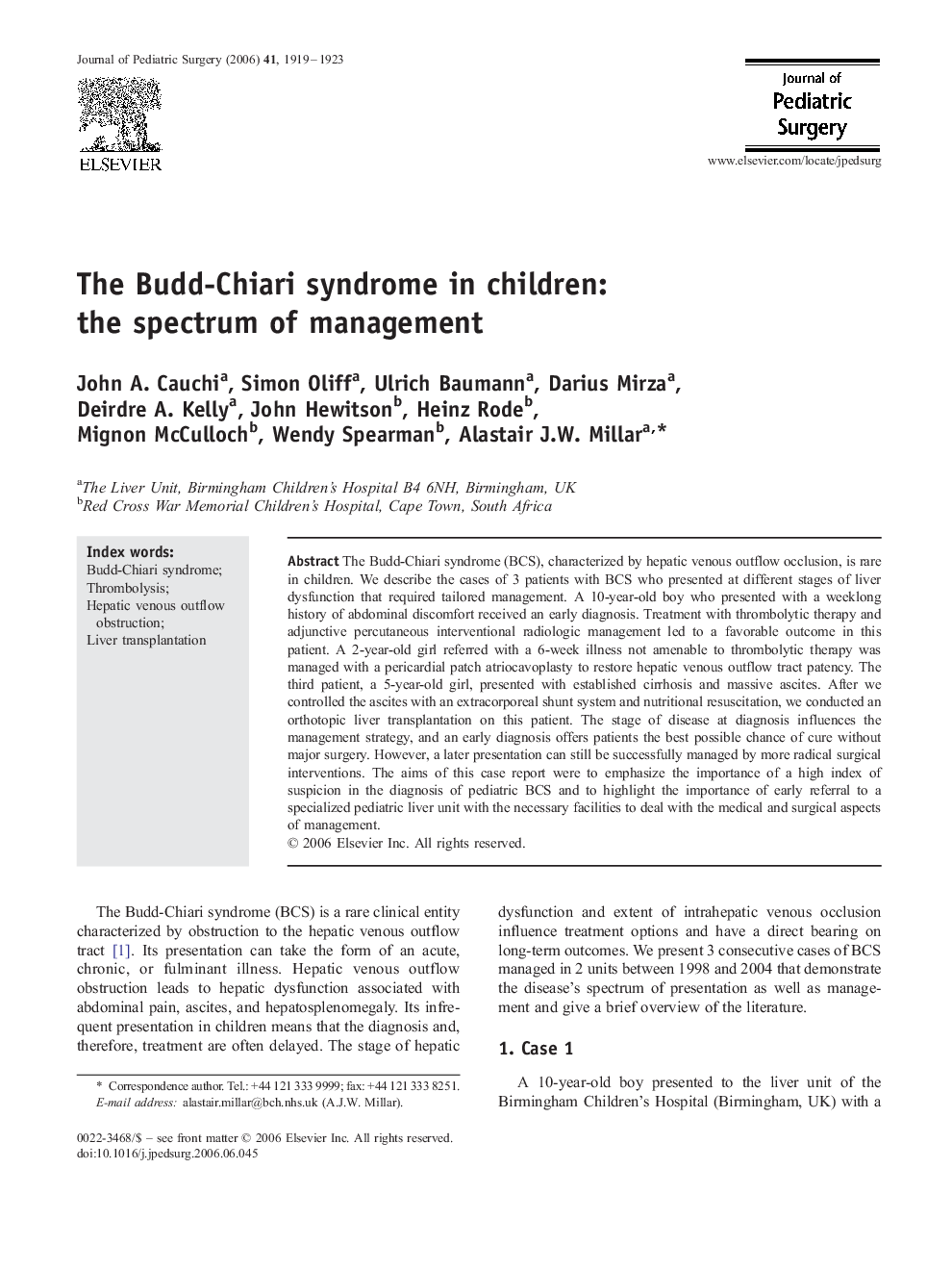| Article ID | Journal | Published Year | Pages | File Type |
|---|---|---|---|---|
| 4160189 | Journal of Pediatric Surgery | 2006 | 5 Pages |
The Budd-Chiari syndrome (BCS), characterized by hepatic venous outflow occlusion, is rare in children. We describe the cases of 3 patients with BCS who presented at different stages of liver dysfunction that required tailored management. A 10-year-old boy who presented with a weeklong history of abdominal discomfort received an early diagnosis. Treatment with thrombolytic therapy and adjunctive percutaneous interventional radiologic management led to a favorable outcome in this patient. A 2-year-old girl referred with a 6-week illness not amenable to thrombolytic therapy was managed with a pericardial patch atriocavoplasty to restore hepatic venous outflow tract patency. The third patient, a 5-year-old girl, presented with established cirrhosis and massive ascites. After we controlled the ascites with an extracorporeal shunt system and nutritional resuscitation, we conducted an orthotopic liver transplantation on this patient. The stage of disease at diagnosis influences the management strategy, and an early diagnosis offers patients the best possible chance of cure without major surgery. However, a later presentation can still be successfully managed by more radical surgical interventions. The aims of this case report were to emphasize the importance of a high index of suspicion in the diagnosis of pediatric BCS and to highlight the importance of early referral to a specialized pediatric liver unit with the necessary facilities to deal with the medical and surgical aspects of management.
